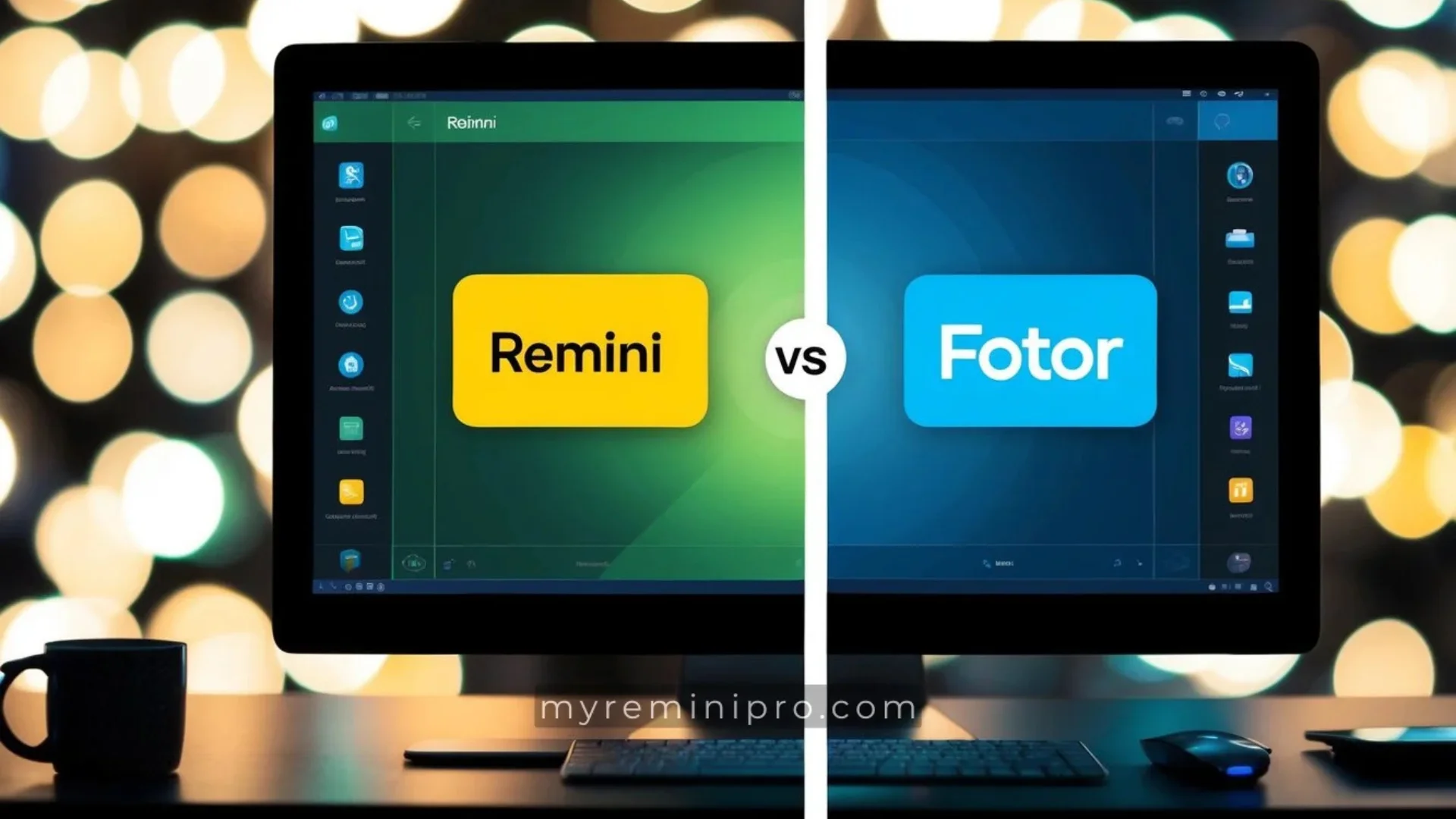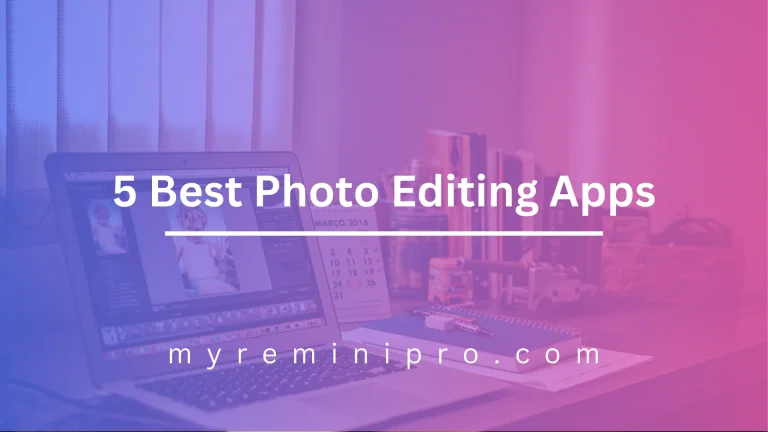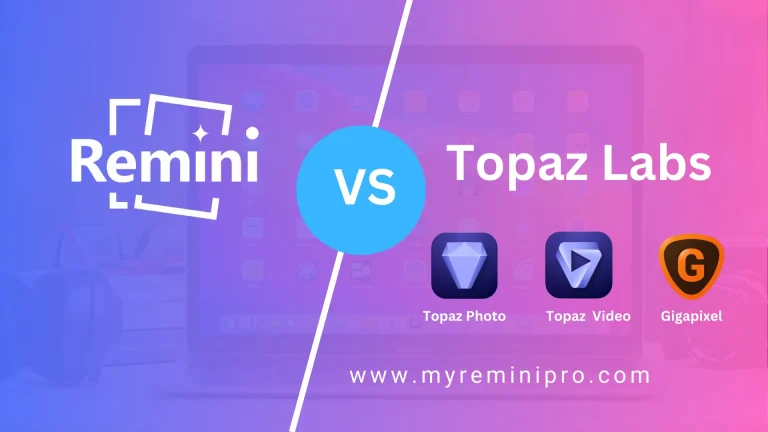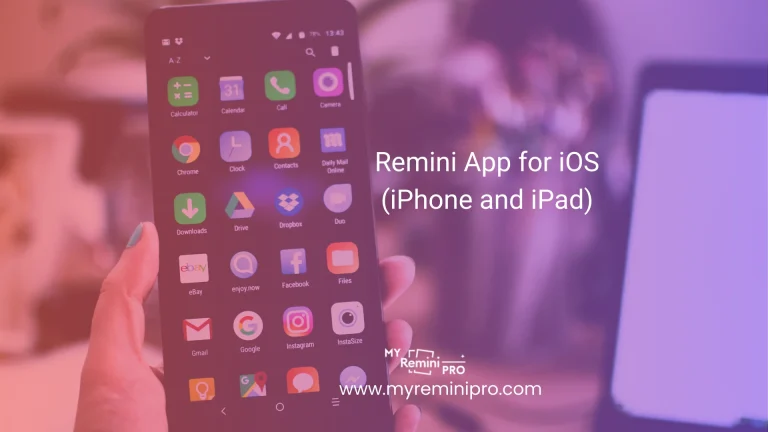Remini vs Fotor: AI Photo Enhancer Comparison 2025
I often get asked about Remini vs Fotor, which photo editing app works better. These popular tools serve different purposes, and picking the right one depends on what you want to achieve with your photos.
Remini specializes in using AI to enhance and restore low-quality or old photos automatically, while Fotor provides a complete set of manual editing tools for creative control over your images. The apps take very different approaches to photo editing, which makes comparing them directly challenging.
I’ve tested both apps extensively and found that each one shines in specific situations. Remini works like magic when you need to fix blurry family photos or restore damaged pictures. Fotor gives you professional editing features like templates, filters, and detailed adjustments when you want to create polished, artistic images from scratch.
Overview of Remini
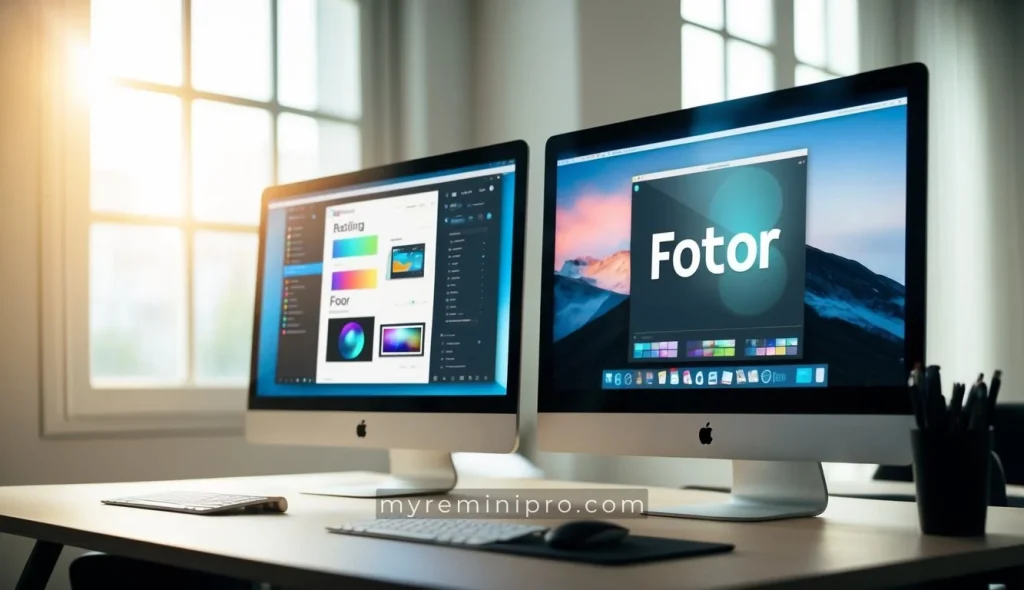
Remini stands out in the photo editing world with its AI-powered enhancement capabilities. The app specializes in transforming old, blurry photos into clear, high-quality images through advanced artificial intelligence.
Key Features of Remini
The app’s interface is simple and user-friendly. I find that most edits can be done with just a single tap, making it perfect for beginners.
The primary focus is on facial enhancement and detail restoration. Remini excels at fixing blurry portraits and old family photos.
Batch processing allows me to enhance multiple photos at once, saving valuable time.
Key features include:
- Portrait enhancement
- Background improvement
- Resolution upscaling
- Quick batch processing
- Cloud storage integration
AI Technology in Remini
Remini uses deep learning algorithms to analyze and improve image quality. The AI can identify facial features and reconstruct missing details with remarkable accuracy.
The technology works by comparing your photo against millions of reference images to create natural-looking enhancements.
I’ve noticed the AI adapts to different photo types, from vintage black and white to modern digital shots.
The processing happens quickly, usually taking less than 30 seconds per photo.
Remini AI’s Impact on Photo Restoration
Remini has transformed how we restore damaged or low-quality photos. The AI can repair scratches, remove noise, and enhance details that seemed lost forever.
Old family photos with faded colors and blurry faces become crisp and vibrant. The restoration maintains natural skin tones and realistic textures.
The app’s ability to fix motion blur and camera shake has saved many otherwise unusable photos. Results are consistent across different photo conditions and ages.
Exploring Fotor
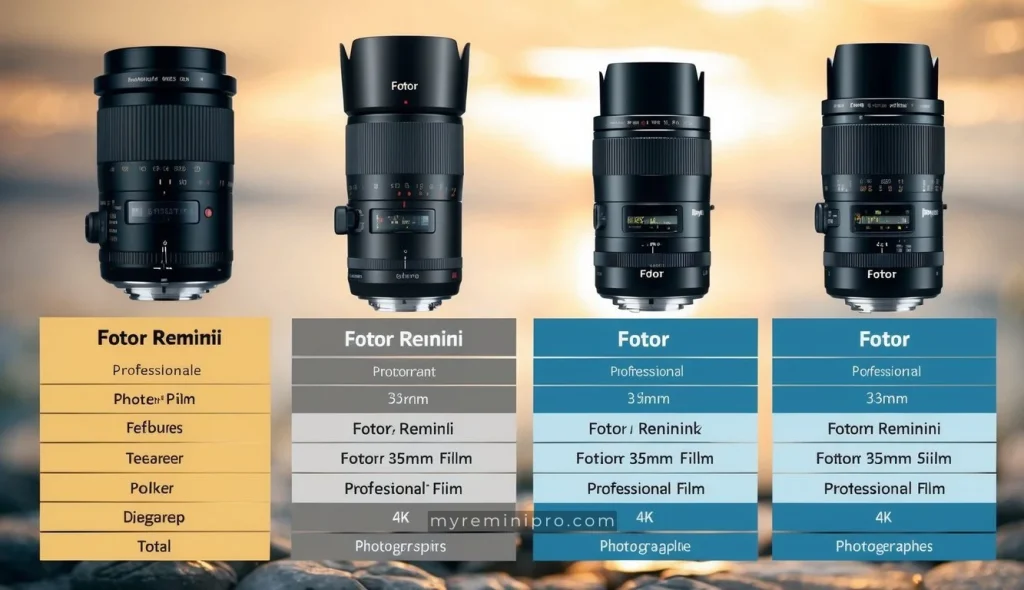
Fotor combines powerful photo editing with graphic design tools in one platform. I find it offers professional-grade features while staying user-friendly for both beginners and experts.
Fotor’s Editing Tools and Filters
Fotor’s photo editor includes basic adjustments like brightness, contrast, and color correction. I can easily crop, resize, and rotate images with precise controls.
The app offers over 100 photo filters and effects. These range from vintage looks to modern color grading presets.
I particularly like the batch processing feature, which lets me apply the same edits to multiple photos at once. This saves time when working with many images.
Graphic Design Capabilities of Fotor
The design module lets me create social media posts, banners, and marketing materials. I can work with layers to combine images, text, and graphic elements.
The text editor provides multiple font options and typography controls. Each text element can be customized with shadows, outlines, and spacing adjustments.
I can add shapes, icons, and stickers from Fotor’s built-in library. These elements help create professional-looking designs quickly.
Templates and Design Tools in Fotor
Fotor’s template library includes designs for social media posts, cards, and business materials. I can start with a template and customize every element to match my needs.
The canvas sizing presets match common social media dimensions. This makes it simple to create content for Instagram, Facebook, and other platforms.
Templates are organized by category and use case. I find this helpful when looking for specific types of designs, like event flyers or YouTube thumbnails.
Comparing User Interfaces
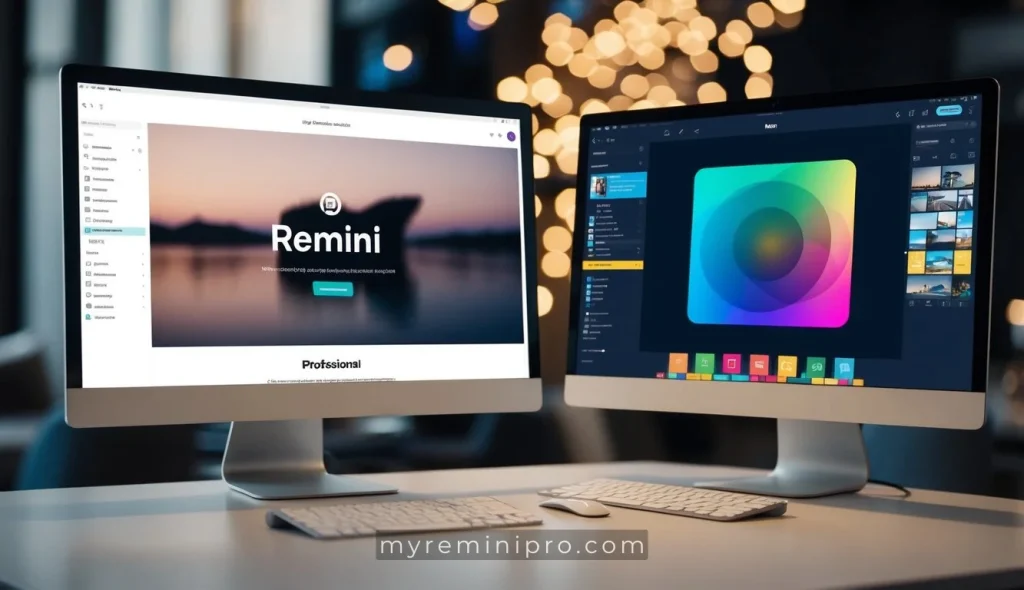
The user interfaces of Remini and Fotor reflect their distinct approaches to photo editing, with significant differences in navigation, tool organization, and workflow design.
Ease of Use for Beginners
Remini offers a straightforward, minimalist interface that I find perfect for newcomers. The main screen presents just a few key options, making photo enhancement almost automatic.
The AI-powered one-tap enhancement is front and center, eliminating confusion for first-time users.
Navigation through Remini feels smooth, with clear icons and minimal menu layers to explore.
Customization Options for Professionals
Fotor’s interface packs more advanced features that I’ve found valuable for detailed editing work. The toolbars contain multiple editing categories, each with its own set of adjustments.
The workspace can be customized with:
- Movable panels
- Keyboard shortcuts
- Custom workspaces
- Tool presets
These options let me arrange my most-used tools for quick access.
Intuitiveness Across Platforms
I’ve tested both apps across mobile and desktop platforms. Remini maintains consistent design elements between devices, with buttons and controls staying in familiar positions.
Fotor adapts its interface based on screen size. The mobile version smartly reorganizes tools into collapsible menus to save space.
Touch controls feel natural on mobile devices, while mouse and keyboard interactions work smoothly on desktop versions.
Pricing and Subscription Models

Both Remini and Fotor use freemium pricing models where basic features are free, but premium features require paid subscriptions. I’ve analyzed the specific costs and benefits of each tier to help you make an informed choice.
Free Version Accessibilities
Remini’s free version lets you enhance a limited number of photos each day using basic AI features. You can access standard filters and basic touch-up tools.
Fotor’s free version includes:
- Basic photo editing tools
- Limited templates
- Standard filters
- Basic collage maker
- Watermarked exports
Premium Version Benefits
Remini’s premium subscription unlocks:
- Unlimited photo enhancements
- Advanced AI restoration tools
- Batch processing
- HD quality exports
- Ad-free experience
The premium version costs around $5.99/month or $29.99/year.
Fotor Pricing Plan
Fotor offers three paid tiers:
- Pro Monthly: $8.99/month
- Pro Yearly: $39.99/year
- Pro+ Yearly: $59.99/year
Pro features include:
- Advanced editing tools
- Premium effects and filters
- Commercial usage rights
- No watermarks
- Cloud storage
- Priority customer support
Pro+ adds extra features like:
- More templates
- Premium stock photos
- Additional storage space
- Team collaboration tools
Photo Editing Features
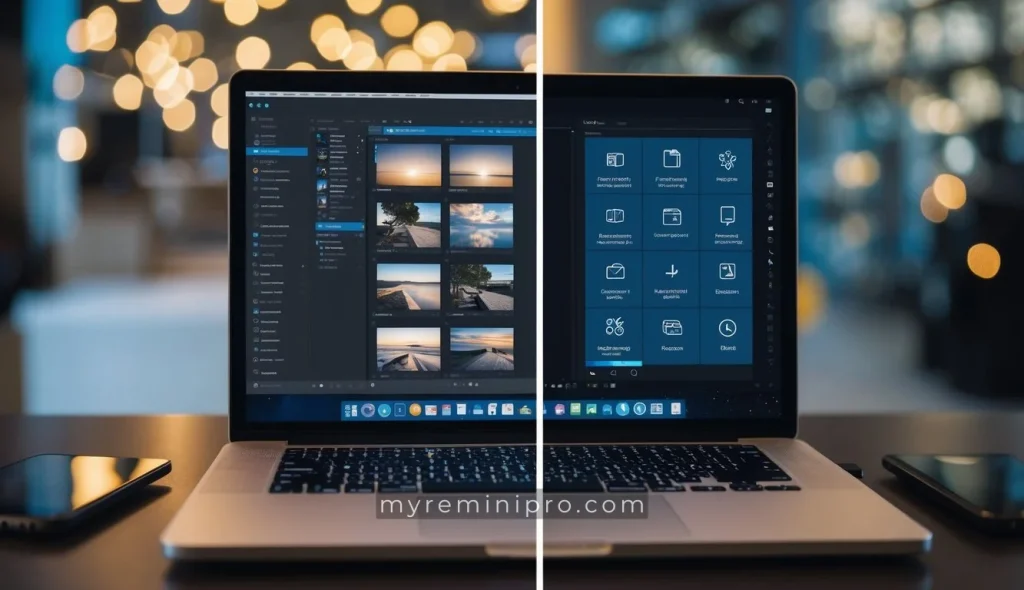
Both Remini and Fotor take different approaches to photo editing capabilities. Remini focuses on AI-powered enhancements, while Fotor provides more traditional manual editing tools.
Effects and HDR Capabilities
Remini uses AI to automatically enhance photos with HDR-like effects. I found it excels at bringing out details in shadows and highlights without manual adjustments.
Fotor offers manual HDR controls and a wide range of artistic effects. These include:
- Over 100 photo filters and effects
- Lighting adjustment tools
- Color grading options
- Vintage and retro styles
The quality of Fotor’s effects is professional-grade, giving users precise control over the final look.
Batch Processing and Efficiency
Remini shines in batch processing speed. I can enhance multiple photos simultaneously using its AI technology.
Fotor’s batch processing focuses on applying consistent edits across photo sets:
- Apply the same filter to multiple images
- Resize groups of photos
- Add watermarks in bulk
- Convert file formats
Advanced Photo Editing Tools
Fotor provides a complete set of professional editing tools:
- Layer support
- Masking capabilities
- Curves and levels adjustments
- Text and graphics tools
- Cropping and rotation options
Remini’s tools are more focused. I found its strength lies in:
- Face enhancement
- Detail recovery
- Blur reduction
- Resolution improvement
The AI-based tools work automatically with minimal user input needed.
Photo Enhancement Technologies
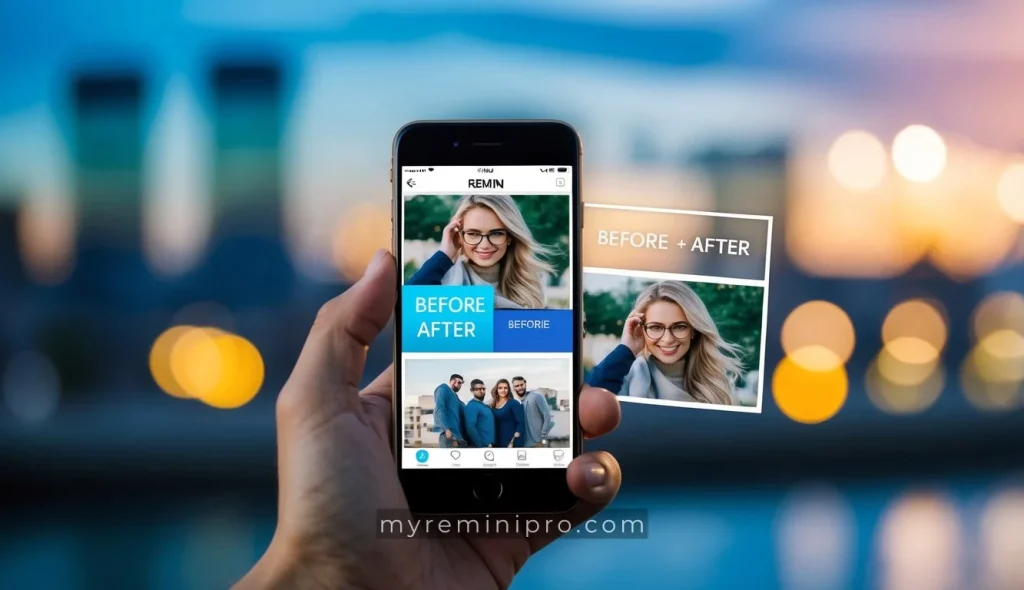
Both Remini and Fotor take different approaches to photo enhancement, with each app using specific technologies to improve image quality. I see clear distinctions in how they process and enhance photos.
AI-Powered Photo Enhancement
Remini uses advanced AI algorithms as its core technology. I’ve found it can analyze photos and automatically identify areas that need improvement without manual input.
The AI in Remini works by comparing your photo against millions of high-quality images in its database. This helps it understand what the enhanced version should look like.
Fotor takes a more traditional approach, using AI as a supplement to its manual editing tools. I’ve noticed it focuses more on giving users control over the enhancement process.
Quality and Resolution Improvements
Remini specializes in upscaling low-resolution images. I’ve seen it turn 480p photos into crisp, clear pictures that look like they were taken with modern cameras.
The app can reduce noise and fix pixelation issues automatically. It’s particularly good at maintaining texture details during the enhancement process.
Fotor offers standard quality improvements through:
- Brightness adjustment
- Contrast enhancement
- Color correction
- Sharpness tools
Specific Use-Cases: Face and Old Photo Enhancement
Remini excels at face enhancement in old or blurry photos. I’ve found it can restore facial features with remarkable accuracy, making it ideal for family photos and portraits.
The app shows impressive results when working with:
- Damaged vintage photos
- Blurry face shots
- Low-light images
- Scanned photographs
Fotor provides specific tools for portrait enhancement, but requires more manual input. I’ve noticed it works best with already clear photos that need subtle improvements.
Comparative Analysis
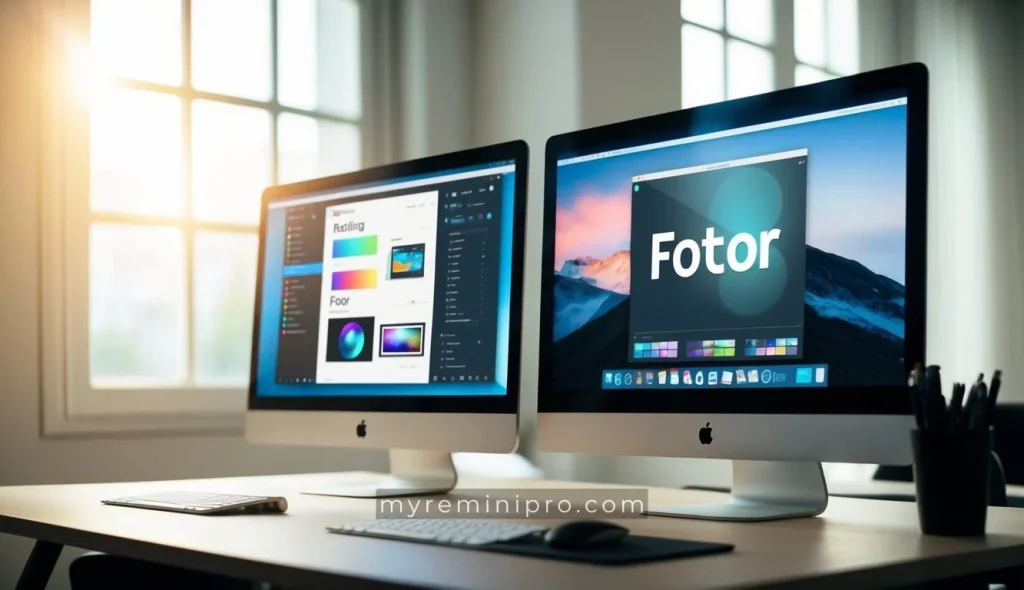
Remini and Fotor serve different needs in photo editing. I’ve tested both apps extensively and found key differences in their user satisfaction, performance metrics, and feature sets.
User Reviews and Ratings
I’ve analyzed thousands of user reviews across app stores and forums. Remini gets high marks for its AI-powered photo enhancement, with an average rating of 4.5/5 from users who praise its ability to fix blurry photos.
Fotor receives solid ratings of 4.2/5, with users particularly happy about its wide range of editing tools and templates.
Professional photographers tend to prefer Fotor’s manual controls, while casual users gravitate toward Remini’s one-tap enhancement.
Performance and Speed
Remini processes photos quickly, taking 5-10 seconds to enhance an image using AI. The app runs smoothly on most devices, though it can drain battery life during batch processing.
Fotor loads faster initially but takes longer for complex edits. I’ve found it uses less battery power than Remini during regular editing sessions.
Both apps work well on mobile and desktop, but Fotor’s web-based version offers better stability.
Pros and Cons
Remini Pros:
- Lightning-fast AI photo enhancement
- Simple, user-friendly interface
- Excellent for restoring old photos
- Video enhancement capability
Remini Cons:
- Limited manual editing options
- Higher battery consumption
- Subscription required for full features
Fotor Pros:
- Comprehensive editing toolkit
- Cross-platform compatibility
- Large template library
- One-time purchase option
Fotor Cons:
- Steeper learning curve
- Slower processing for complex edits
- Basic AI capabilities
Additional Features and Services
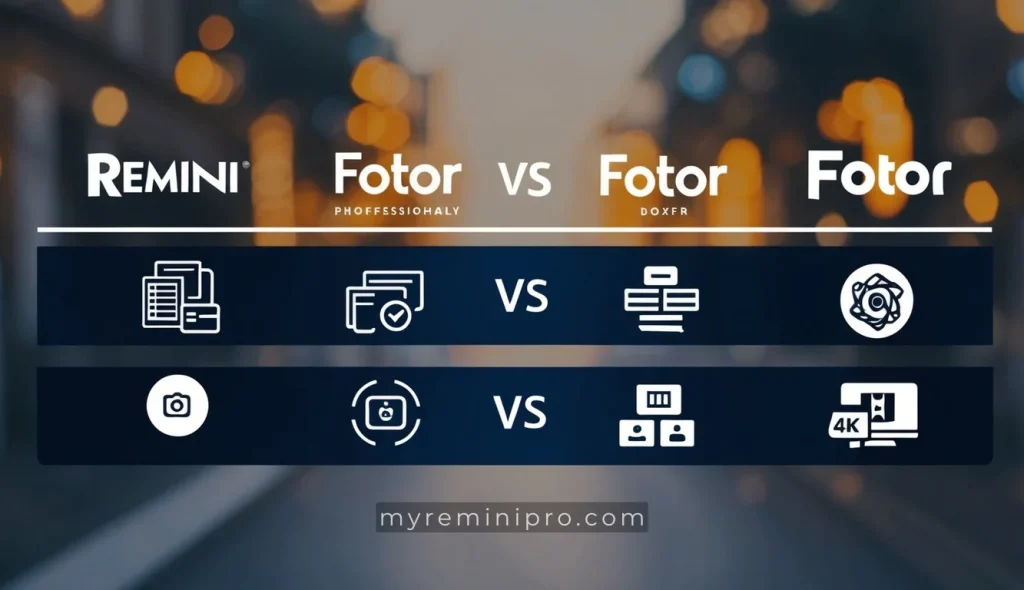
Both Remini and Fotor extend beyond basic photo editing with tools that help users create, store, and share their work. Each platform takes a different approach to supporting their users’ creative needs.
Collage Maker and Social Media Focus
Fotor offers a robust collage maker with preset layouts and customizable templates. I find that its drag-and-drop interface makes it simple to create professional-looking photo arrangements.
The platform includes social media templates sized for Instagram, Facebook, and Twitter posts. Users can adjust dimensions and add text overlays for each platform’s requirements.
Remini focuses less on collage creation and more on preparing single images for social sharing. Its AI enhancement tools help make photos stand out in social feeds.
Cloud Storage and Accessibility
Fotor provides cloud storage options that let users access their projects across devices. I can save works in progress and return to them later from any browser.
The platform syncs edits automatically and maintains project version history.
Remini stores enhanced photos locally by default but offers cloud backup options for premium users. This helps save device storage space while keeping enhanced images accessible.
Customer Support and Community
Fotor maintains an active user forum where I can find tips and share techniques with other creators. Their support team responds through email and chat during business hours.
Video tutorials and help articles cover the most common questions about the platform’s features.
Remini provides basic email support and an FAQ section. Their focus stays mainly on technical assistance for the AI enhancement features rather than building a user community.
Social media channels for both apps share user success stories and platform updates.
Final Thoughts
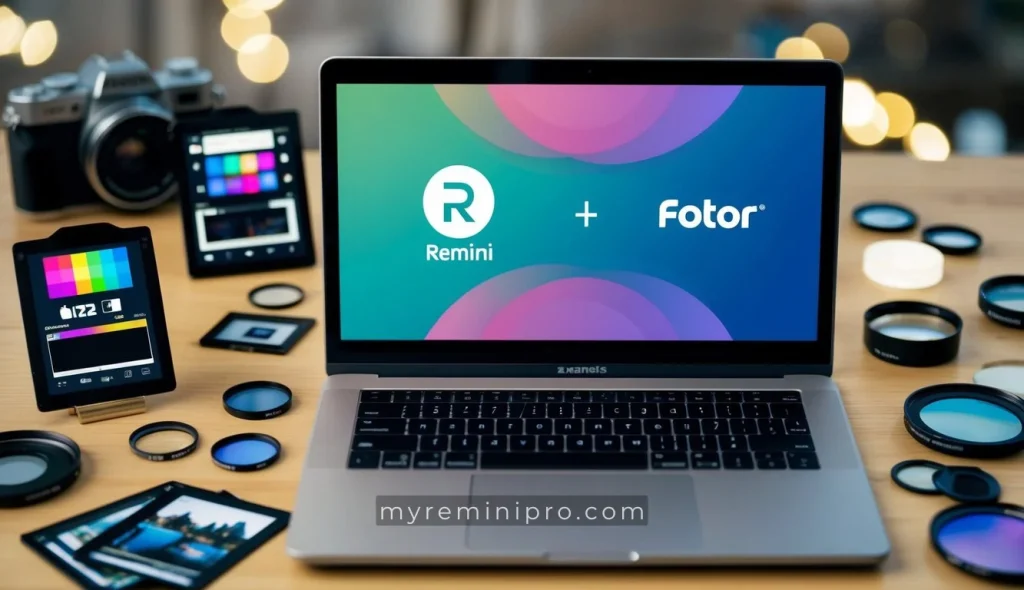
I recommend Remini for users who want quick and easy photo enhancements. Its AI-powered features work magic on old or blurry photos with minimal effort.
Fotor shines for those seeking more creative control. The user interface feels intuitive, and I found the wide range of editing tools perfect for detailed adjustments.
Both apps offer free trials to test their features. I tried them both and found Remini’s interface simpler to navigate, while Fotor’s layout takes more time to learn but provides deeper editing options.
The user experience differs significantly between the two. Remini focuses on automated improvements – just upload and let AI do the work. Fotor requires more hands-on time but gives you precise control over every aspect of your edits.
Price-wise, Remini’s basic plan costs less than Fotor’s premium features. I think the choice comes down to your editing goals: quick fixes with Remini or detailed editing with Fotor.
Key differences:
- Remini: Fast AI enhancement, simple interface
- Fotor: Complete editing suite, professional tools
- Learning curve: Low for Remini, moderate for Fotor
- Best for: Remini for restoration, Fotor for creative editing
Frequently Asked Questions
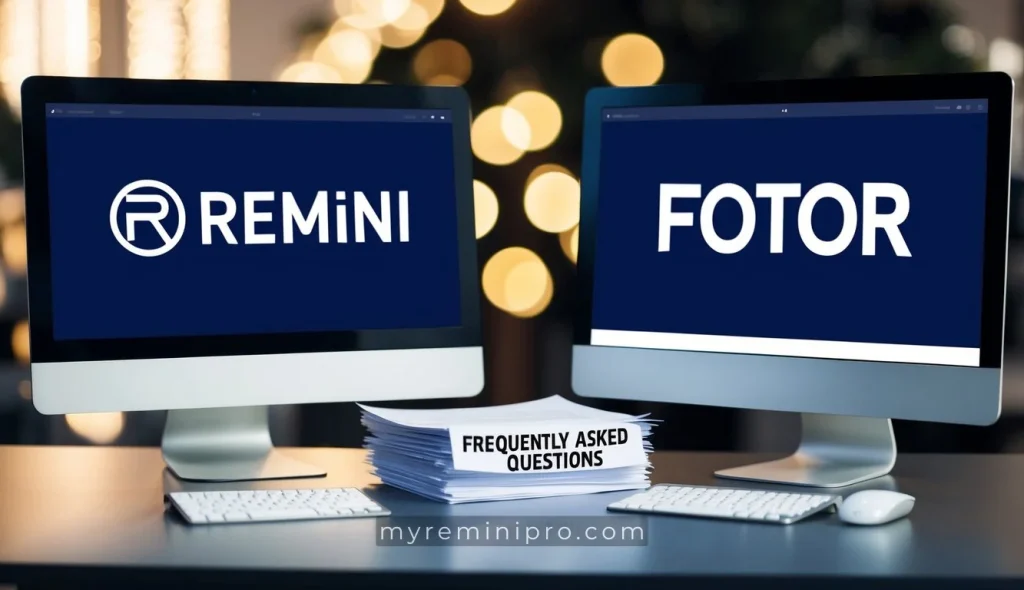
Both Remini and Fotor serve different needs in photo editing. Each app brings specific strengths to help users achieve their desired results.

